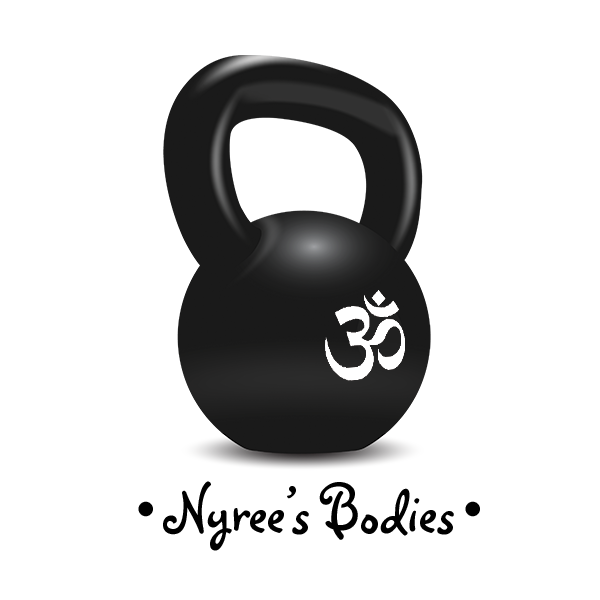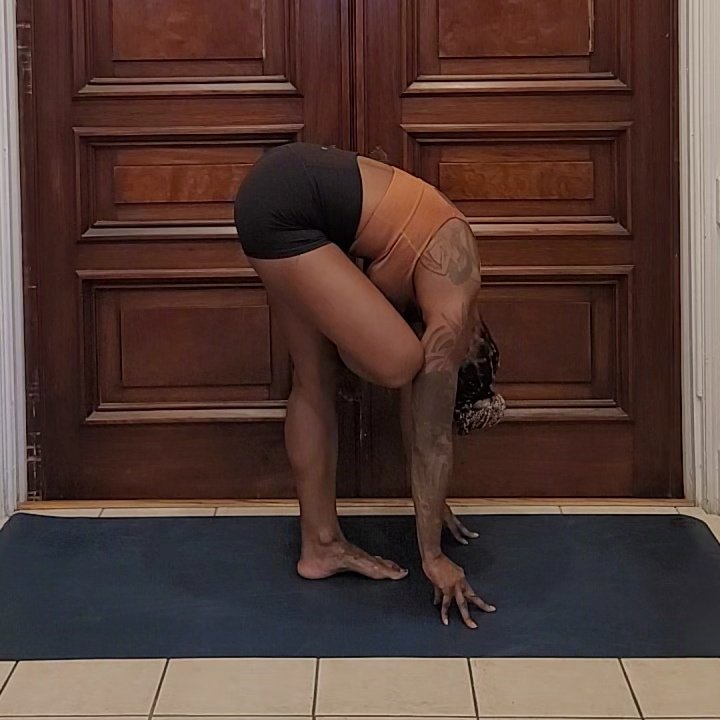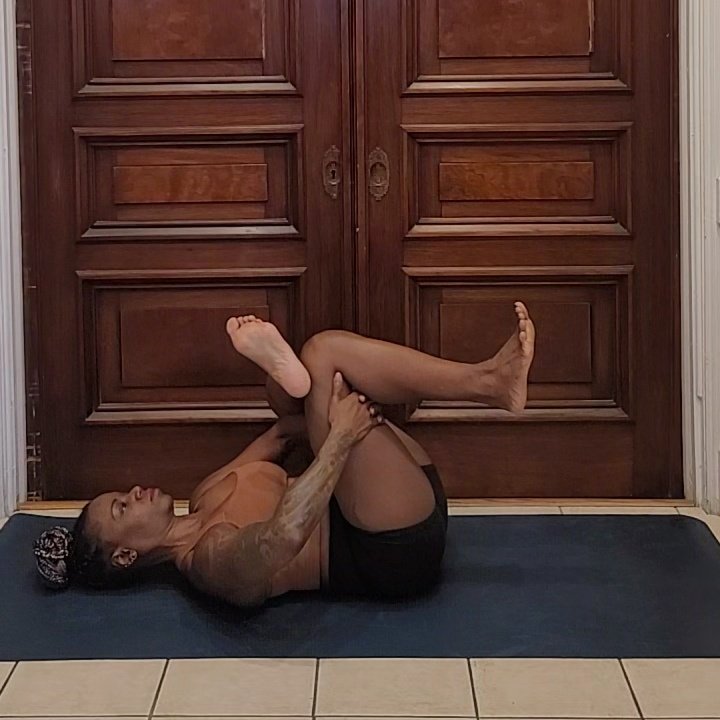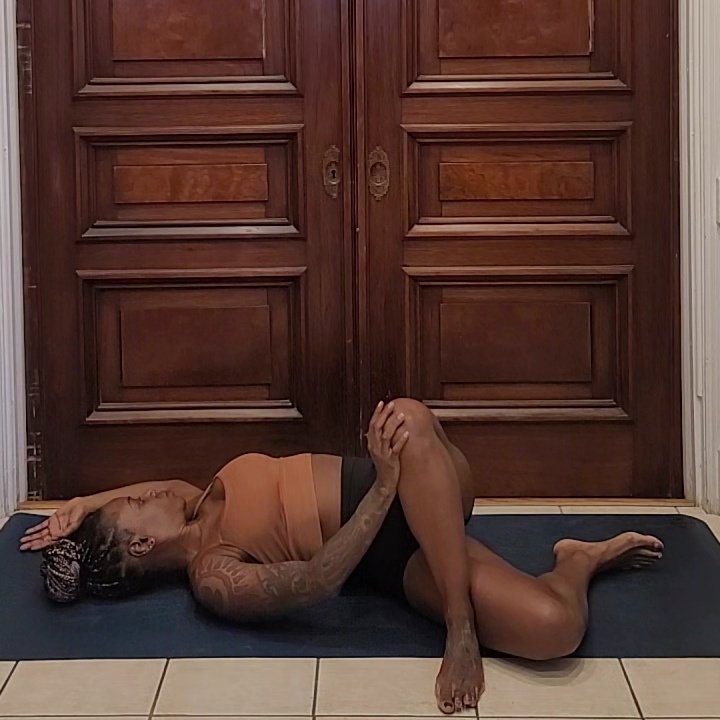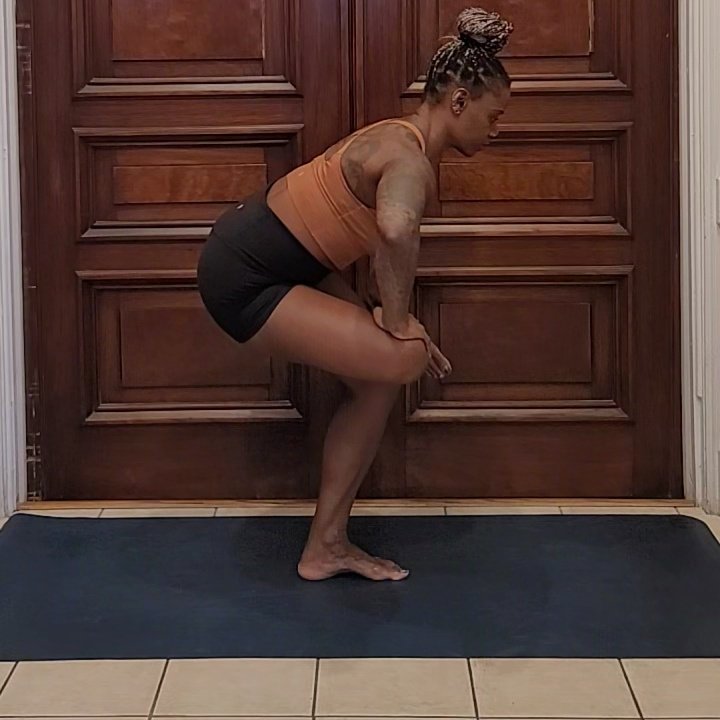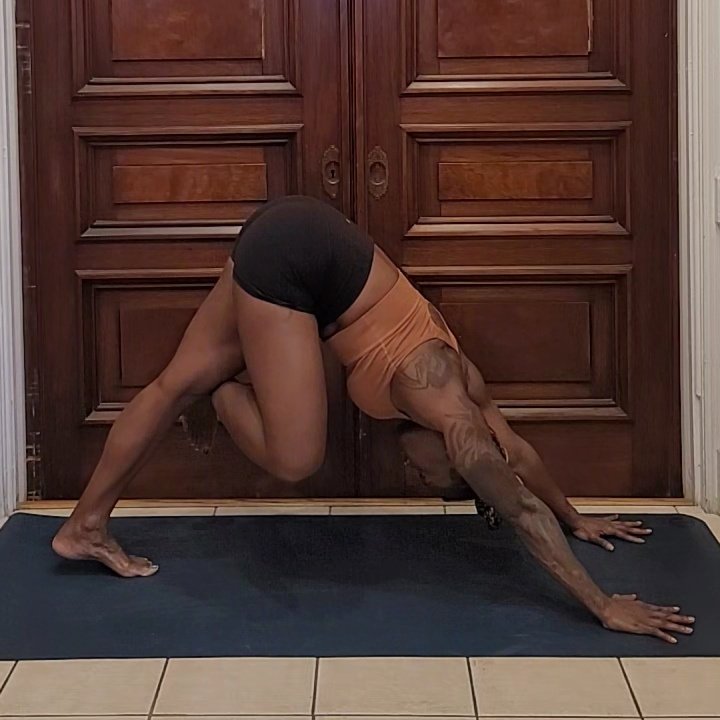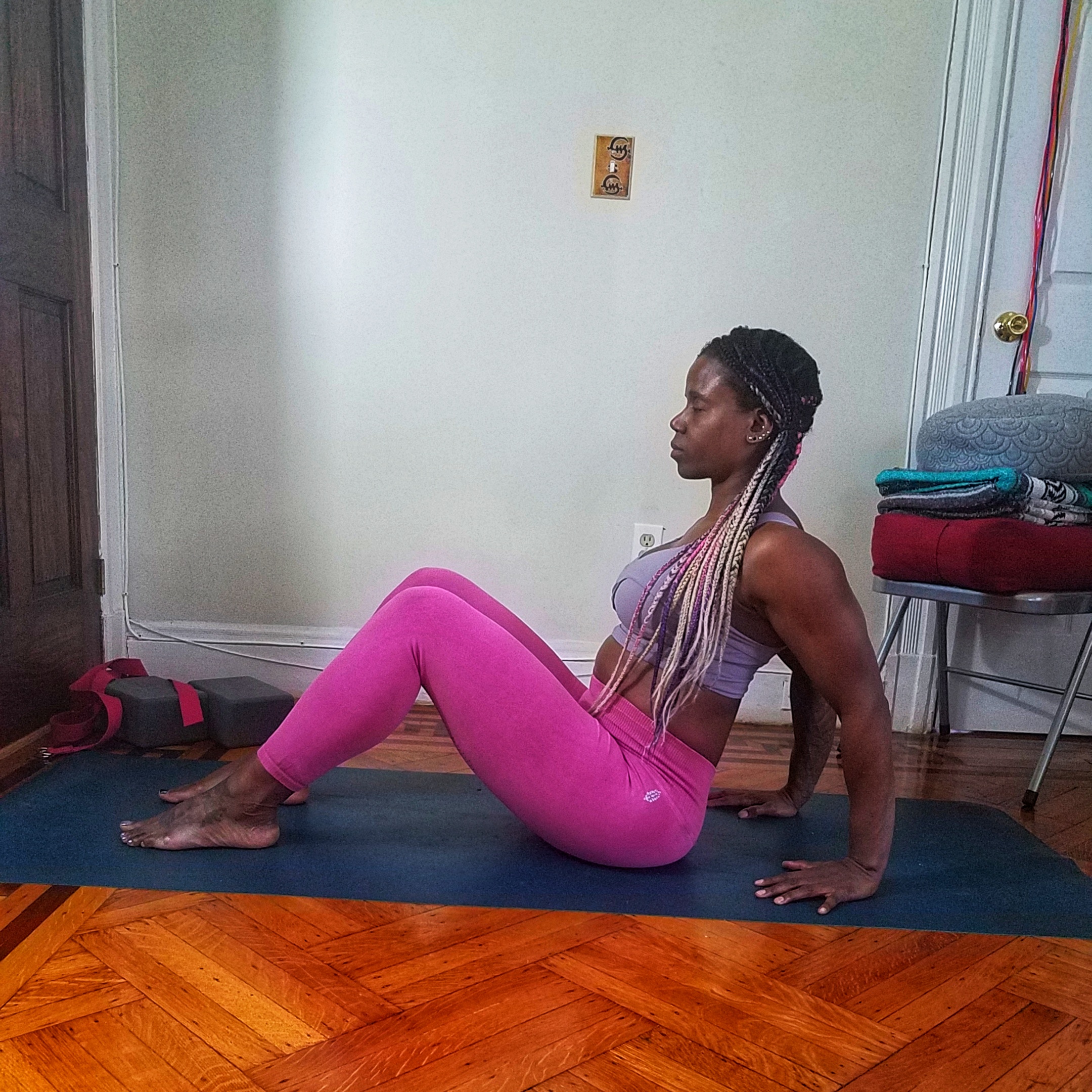Your Custom Text Here
The Figure Four Stretch and your Piriformis
The figure four is an important and often performed hip stretch for the piriformis
Standing Forward Folding Figure Four Stretch
The figure four is an important and often performed hip/glute stretch, usually as part of a series of other lower body stretches, like the ubiquitous standing quadriceps stretch where you bend at the knee and grab the foot in one hand with the opposite arm over head and the hamstring stretch where you’re leaning forward over a straight leg supported by the bent back leg while reaching for the toes (you know what I’m talking about), performed on a kind of auto pilot as one of those stretches you’re supposed to do. However, many don’t know what muscle they’re actually stretching and/or how to perform it properly. Unless you’ve been diagnosed with an ailment perpetuated by tightness in the piriformis, are a yoga practitioner or an athlete of some sort, most don’t actually understand the importance of this particular stretching exercise. Often the cause for pain, hip tightness and reduced mobility, let’s take a moment to break down the piriformis muscle, figure four stretch techniques and variations and why it’s an important stretch.
The piriformis muscle is one of the deep muscles of the hip joint whose primary job is external rotation; think standing with straight legs & feet forward then turning the feet outward like a ballet dancer. The piriformis muscle rotates the femur during the hip extension (the kick back and abducts (brings the leg toward the midline of the body) the femur (thigh bone) during flexion (Rockette kick) of the hip. Piriformis tightness or injury can come from doing too much exercise and overtraining. It is a repetitive stress issue that affects athletes like runners and cyclists. On the other hand piriformis tightness can occur from doing too little activity like sitting at a desk all day. If not managed, a tight piriformis can lead to a more severe issue, Piriformis syndrome. Piriformis syndrome is an underdiagnosed condition defined by pain and numbness in your buttocks and down the back of your leg which occurs when the piriformis muscle in the buttocks presses on the sciatic nerve.
The figure four stretch is the go to stretch to correct the issue of tightness and pain in the hips and increases mobility. To correctly perform the figure four stretch, place the ankle of the affected leg on the opposite thigh above the knee, then use your hand to gently push the knee of the affected leg away from your body holding for a few seconds then releasing. Repeat this 3-4 times. Daily.
This stretch should be performed regularly if you are an athlete or enthusiast who participates in repetitive motion physical activity of the lower body or sit for long periods of time to reduce the chances of feeling discomfort in the hip by way of the piriformis muscle.
Seated Figure Four
Forward Fold Figure Four
Reclining Figure Four
Reclining Figure Four with Spinal Twist
Standing Figure Four
Standing Forward Fold Figure Four
Figure Four in Downward Facing Dog
Reclining Figure Four with foot on the wall
Yoga for Better Athletic Performance
Part 2: Shoulder and Chest Opening shoulder extension
Let me start by saying I am not recreating the wheel. Yoga has been practiced for centuries and am presently not skilled enough to create a new format and nor does one need to be created. While the popularity of yoga has increased, the perception of yoga’s exclusivity has persisted as well as yogi practitioners being viewed as a certain body type. As an athletic person, yoga has directly affected my athletic performance. I move better with less restrictions from tight muscles and joints and have had less setbacks from injury due to muscle pulls. Heavy lifters can be hardheaded. Time away from the actual lifting of heavy things cuts into the actual time of lifting heavy things. Memories are short when it comes to that last shoulder wrench or bicep pull which lead to that unscheduled lifting break, when the addition of flexibility and mobility to the lifting program might have prevented it.
Structure of the shoulder joint (humerous and scapula) and shoulder girdle (shoulder joint and clavicle) is designed for movement of the arm through three planes; sagittal (flexion /extension), frontal (abduction / adduction), transverse (horizontal abduction & adduction and rotation). Increasing joint mobility, stretching has to take place through all joint angles. In this section, Continuing to focus on postures in the saggital plane, shoulder extension, with the arms moving from the front body and placed behind the body.
Rounded shoulders known as kyphosis can be caused by bad seated posture, over work of the anterior muscles around the shoulder joint and girdle or anatomical structure to name a few. As we age, this condition will become more pronounced and can cause problems with breathing, back pain and reduced mobility. Shown below are a few of my favorite yoga postures that target the front of the shoulders, are simple to set up and perform and effective. Perform these postures dynamically (with movement\repetitions) before a workout or static after workout is complete.
It is important to note that increasing flexibility and mobility is not a one size fits all deal. Lack of either can be attributed to anatomical structure along with other physiological explanations. Every body is different. Take the time to explore your movement and practice consistently. Oh yeah and breathe.
SAGITTAL PLANE -Shoulder Extension
Stretches the front/top of shoulder joint - anterior/medial deltoids , pectoral muscles
Ardha Purvottanasana - Reverse Table Pose, start position
Ardha Purvottanasana - Reverse Table Pose, end position
Reverse table top - sitting, place feet under knees and hands on floor under shoulders. Lift hips. Try to get parallel to floor. Hold for a a few breathes then repeat. Increase hold length over time. This stretch is also a back body strengthener as the muscles of the posterior chain (glutes, erectors of the the lower back, rhomboids, latissimus dorsi) lift the body to achieve the stretch in the shoulders.
Purvottanasana - Upright Plank Pose, start position
Purvottanasana - Upright Plank Pose, end position
Reverse plank (advanced) -Same set up with legs extended in front instead of bent knee. Lift hips by squeezing the glutes (the glutes initiate hip extension and protects the lower back) and hold for a few breathes and repeat. Increase hold over time. As with reverse table pose, this stretch is also a back body strengthener as the muscles of the posterior chain (glutes, erectors of the the lower back, rhomboids, latissimus dorsi) lift the body to achieve the stretch in the shoulders.
Arms behind back palms together, start position
Arms behind back palms together, end position
Arms behind back palms together. Clasp hands together behind the back. If possible, bring palms together with no space between wrists. Move shoulders down and away from ears, slowly raise hands and arms away from body. Hold for a few seconds, Breathe then repeat.
Arms behind back, belt modification When the hands are unable to grasp behind the back grab a belt, strap, towel etc. and walk hands as close to each other as possible without pain in the shoulder. Move shoulders down and away from ears, slowly raise hands and arms away from body. Hold for a few seconds. Breathe then repeat.
Arms behind the back, belt option, start position
Arms behind the back, belt option, end position
